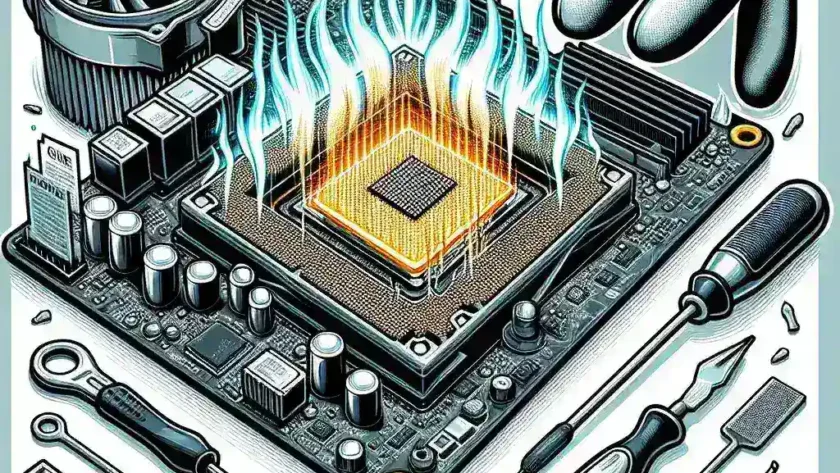When a CPU overheats, it can lead to system instability, data loss, and hardware damage. Overheating can be caused by various factors including poor ventilation, old thermal paste, or dust accumulation. Addressing these issues promptly can ensure your computer performs at its peak. In this article, we'll explore actionable steps to fix an overheating CPU.
Common Causes of CPU Overheating
Understanding the root cause of CPU overheating is the first step towards solving the issue. Below is a table that outlines the common causes and their potential fixes:
| Causes | Potential Fixes |
|---|---|
| Poor Ventilation | Improve airflow in your case, consider additional fans. |
| Dust Accumulation | Regularly clean the interior of your PC. |
| Old Thermal Paste | Replace the thermal paste between the CPU and heatsink. |
| High Ambient Temperature | Improve room cooling, use air conditioning. |
| Overclocking | Lower the CPU clock speed or improve cooling. |
Steps to Fix an Overheating CPU
Step 1: Check and Improve Airflow
Proper airflow inside the PC case is crucial for cooling. Ensure that there are no obstructions to the airflow. You can:
- Organize cables using cable ties
- Install additional case fans
- Ensure exhaust fans are working properly
Step 2: Clean the Interior of your PC
Dust accumulation can severely impact cooling efficiency. To clean the interior:
- Turn off and unplug your computer
- Open the case and use a can of compressed air to blow out dust
- Pay special attention to the fans, heatsinks, and vents
Step 3: Replace Thermal Paste
Thermal paste fills microscopic gaps between the CPU and heatsink for better heat dissipation. Over time, it can dry out and lose effectiveness:
- Carefully remove the heatsink from the CPU
- Clean old thermal paste using isopropyl alcohol and a lint-free cloth
- Apply a small amount of high-quality thermal paste to the CPU surface
- Reattach the heatsink
Step 4: Adjust CPU Settings
If you're overclocking your CPU, you may need to lower the clock speed to reduce heat generation:
- Enter BIOS/UEFI settings
- Find the CPU clock speed and voltage settings
- Reduce the clock speed and voltage incrementally
- Monitor temperatures and stability
Step 5: Improve Ambient Cooling
The temperature of the room can also contribute to CPU overheating. To improve ambient cooling:
- Ensure the room is well-ventilated
- Use an air conditioner or fan to lower room temperature
- Ensure that the PC is not placed in direct sunlight or a confined space
Preventing Future Overheating
Preventive measures can help keep the CPU temperature in check and ensure its longevity:
- Regular Maintenance: Clean the interior of your PC every few months.
- Monitor Temperatures: Use software like HWMonitor or Core Temp to keep an eye on CPU temperatures.
- Quality Components: Invest in high-quality thermal paste and cooling solutions.
- Optimal Placement: Place your computer in a well-ventilated area.
- Power Management: Enable power-saving features that reduce CPU load when full power isn’t needed.
Conclusion
Addressing an overheating CPU promptly can protect your hardware and improve performance. By understanding the causes and implementing the steps outlined above, you can maintain optimal CPU temperatures and ensure the longevity of your system. Regular maintenance and monitoring are key to preventing future issues.

